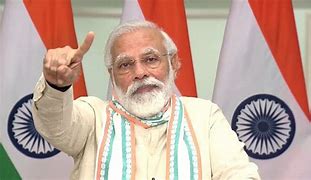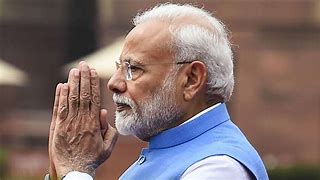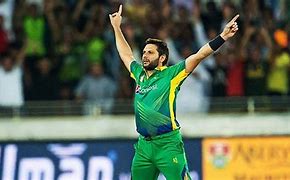Feature
India’s banking sector should establish world class banks: Modi

Pune: Prime Minister Narendra Modi today said that India’s banking sector shpuld establish banks which are world class and also said that the banking sector of a country mirrors its economic growth.
Addressing India’s top bankers at the end of a two-day bankers retreat ‘Gyan Sangam’ here Saturday evening, Modi assured that banks would run professionally without any interference, but accountability was essential.
He called for an end to “lazy banking” and asked banks to take on a “pro-active role” in helping the common man.
On this front, he emphasised the need for public sector banks (PSBs) to set goals for the 75th anniversary of India’s independence in 2022.
Modi said he has resolved to provide housing for all by 2022 and banks had a huge opportunity in this as 11 crore (110 million) homes were required in the country.
Calling upon banks to redefine the parameters for success, Modi said they could prioritise loans to enterprises which would generate more employment, give importance to loans to students as they would be a very productive investment for the country as India needs to develop skills of the youth in a big way.
Modi said the government had no vested interest in the banking sector and public sector banks can derive strength from this.
“We are against political interference, but support political intervention in the interest of the people. This will enable the voice of the common man to reach such institutions,” he said.
He urged the 27 public sector banks in India to develop common strengths among themselves in areas like software and advertising.
Citing the example of number portability in the telecom sector, he said it could improve the customer-centric focus of banks.
“The public sector banks – as a team – should also be conscious of the direction in which the country is moving and work towards simplifying procedures to facilitate the common man,” he said.
The prime minister lauded the role of banks in successfully implementing the Pradhan Mantri Jan Dhan Yojana, which he said would have “multiple effects” and redefine goal-setting among banks due to enhanced confidence levels following its success.
Modi said seven crore (70 million) families – or one-third in India – benefited from the direct cash transfer of LPG subsidy in just the first three days of 2015.
Highlighting the issue of financial illiteracy among the common masses, Modi called upon banks to “trust the common man” and encourage competitions on financial literacy in schools on the lines of ‘mock parliament’ competitions.
As part of their corporate social responsibility (CSR) initiatives, the prime minister felt that banks should take up one sector each year to play a positive role and asked each PSB to help develop 20,000-25,000 Swachhta entrepreneurs as part of the Swachh Bharat Abhiyaan.
Terming the ‘Gyan Sangam’ as a unique initiative, Modi said it reflects team spirit and a collective will to address issues and find solutions to problems which was the first step towards catalysing transformation.
He acknowledged that this was perhaps the first time banks had given tasks to the prime minister through a presentation and said informal discussions helped achieve a ‘meeting of minds’, which in turn enables setting strategic goals.
Maharashtra Governor C.V. Rao, Chief Minister Devendra Fadnavis, Union Finance Minister Arun Jaitley, Minister of State for Finance Jayant Sinha, RBI Governor Raghuram Rajan, financial services secretary Hasmukh Adhia, top heads of banks and financial institutions were present on the occasion.
Entertainment
Meghalaya Reserves Legalized Gambling and Sports Betting for Tourists

The State Scores Extra High on Gaming-Friendly Industry Index
Meghalaya scored 92.85 out of 100 possible points in a Gaming Industry Index and proved to be India’s most gaming-friendly state following its recent profound legislation changes over the field allowing land-based and online gaming, including games of chance, under a licensing regime.
The index by the UK India Business Council (UKIBC) uses a scale of 0 to 100 to measure the level of legalisation on gambling and betting achieved by a state based on the scores over a set of seven different games – lottery, horse racing, betting on sports, poker, rummy, casino and fantasy sports
Starting from February last year, Meghalaya became the third state in India’s northeast to legalise gambling and betting after Sikkim and Nagaland. After consultations with the UKIBC, the state proceeded with the adoption of the Meghalaya Regulation of Gaming Act, 2021 and the nullification of the Meghalaya Prevention of Gambling Act, 1970. Subsequently in December, the Meghalaya Regulation of Gaming Rules, 2021 were notified and came into force.
All for the Tourists
The move to legalise and license various forms of offline and online betting and gambling in Meghalaya is aimed at boosting tourism and creating jobs, and altogether raising taxation revenues for the northeastern state. At the same time, the opportunities to bet and gamble legally will be reserved only for tourists and visitors.
“We came out with a Gaming Act and subsequently framed the Regulation of Gaming Rules, 2021. The government will accordingly issue licenses to operate games of skill and chance, both online and offline,” said James P. K. Sangma, Meghalaya State Law and Taxation Minister speaking in the capital city of Shillong. “But the legalized gambling and gaming will only be for tourists and not residents of Meghalaya,” he continued.
To be allowed to play, tourists and people visiting the state for work or business purposes will have to prove their non-resident status by presenting appropriate documents, in a process similar to a bank KYC (Know Your Customer) procedure.
Meghalaya Reaches Out to a Vast Market
With 140 millions of people in India estimated to bet regularly on sports, and a total of 370 million desi bettors around prominent sporting events, as per data from one of the latest reports by Esse N Videri, Meghalaya is set to reach out and take a piece of a vast market.
Estimates on the financial value of India’s sports betting market, combined across all types of offline channels and online sports and cricket predictions and betting platforms, speak about amounts between $130 and $150 billion (roughly between ₹9.7 and ₹11.5 lakh crore).
Andhra Pradesh, Telangana and Delhi are shown to deliver the highest number of bettors and Meghalaya can count on substantial tourists flow from their betting circles. The sports betting communities of Karnataka, Maharashtra, Uttar Pradesh and Haryana are also not to be underestimated.
Among the sports, cricket is most popular, registering 68 percent of the total bet count analyzed by Esse N Videri. Football takes second position with 11 percent of the bets, followed by betting on FIFA at 7 percent and on eCricket at 5 percent. The last position in the Top 5 of popular sports for betting in India is taken by tennis with 3 percent of the bet count.
Local Citizens will Still have Their Teer Betting
Meghalaya residents will still be permitted to participate in teer betting over arrow-shooting results. Teer is a traditional method of gambling, somewhat similar to a lottery draw, and held under the rules of the Meghalaya Regulation of the Game of Arrow Shooting and the Sale of Teer Tickets Act, 2018.
Teer includes bettors wagering on the number of arrows that reach the target which is placed about 50 meters away from a team of 20 archers positioned in a semicircle.
The archers shoot volleys of arrows at the target for ten minutes, and players place their bets choosing a number between 0 and 99 trying to guess the last two digits of the number of arrows that successfully pierce the target.
If, for example, the number of hits is 256, anyone who has bet on 56 wins an amount eight times bigger than their wager.























